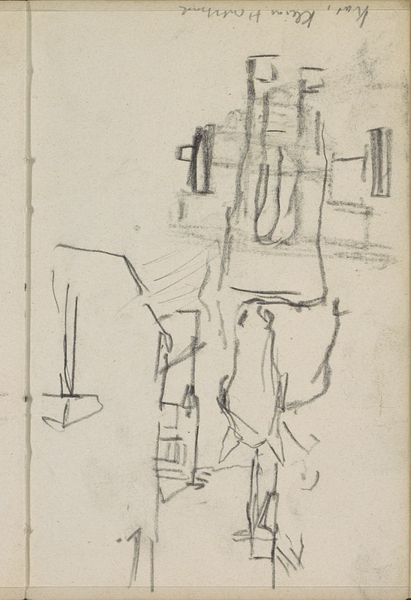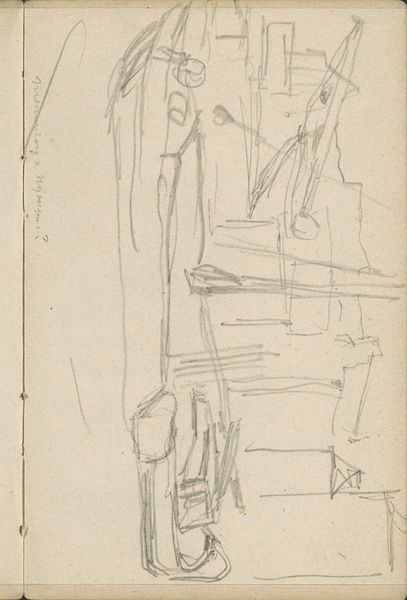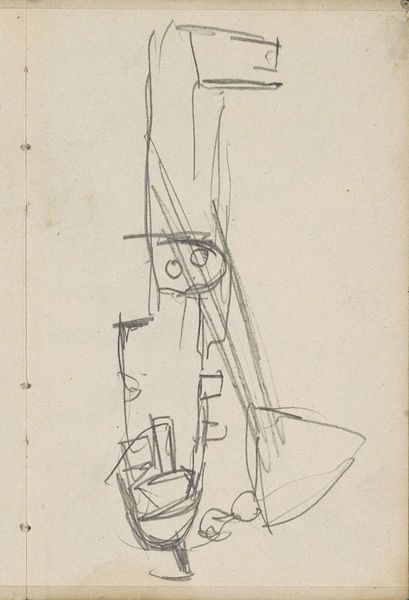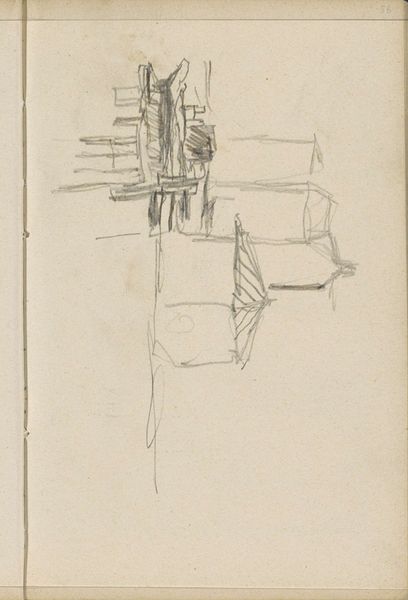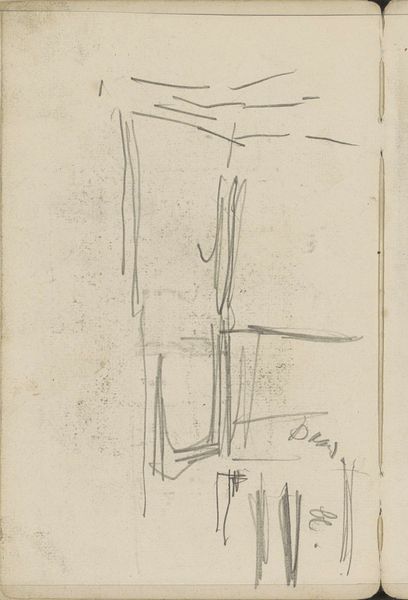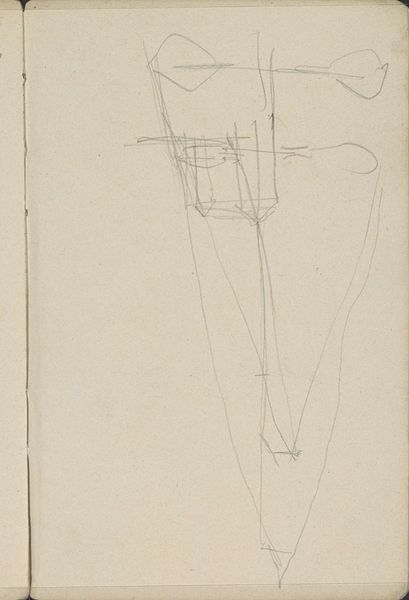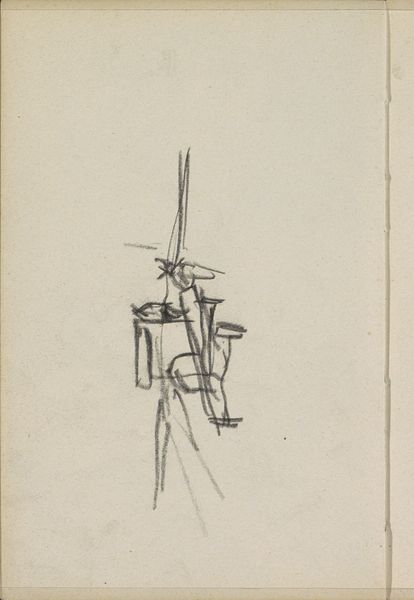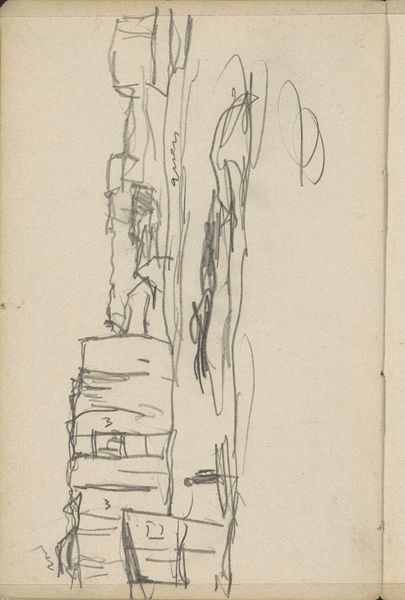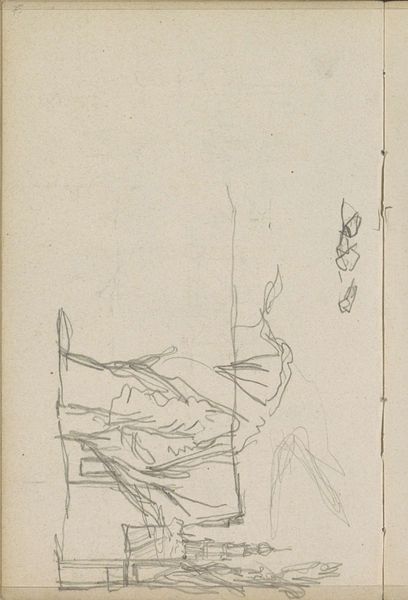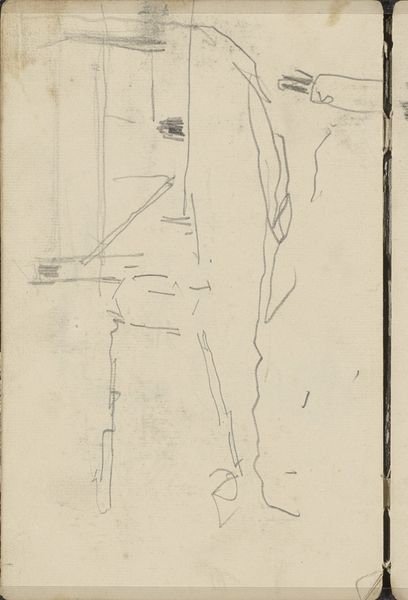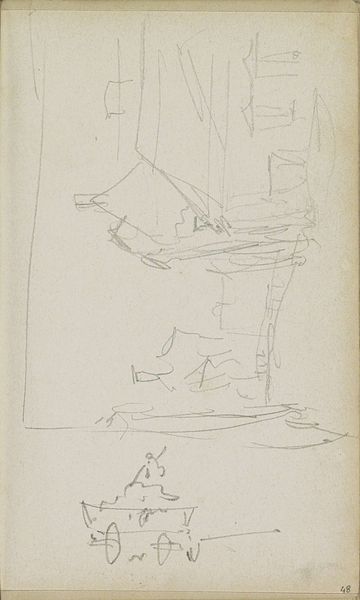
Copyright: Rijks Museum: Open Domain
Curator: Breitner’s pencil drawing, titled "Study, Possibly of a Boat," dates from around 1903 and gives us a glimpse into his working methods. It is held here at the Rijksmuseum. Editor: There is such incredible immediacy to the strokes—it feels like the barest skeleton of a vision. Spare but full of latent energy, I think. Curator: Breitner, a key figure in the Amsterdam Impressionist movement, frequently used sketches like this as preparatory studies for his paintings. He was deeply engaged with representing modern urban life, particularly working-class districts and bustling street scenes. His artistic choices challenged the prevailing romantic ideals of the art establishment. Editor: Visually, the dominance of verticals is really striking, almost claustrophobic despite the surrounding white space of the paper. You have these tightly grouped parallel lines that imply depth, while that singular curved shape draws the eye in and traps it. It lends a sense of confinement somehow, as if something looming were right above us. Curator: Given his radical social perspective, this cramped composition may indeed symbolize the oppressive urban environment that he portrayed in his wider body of work. His decision to depict everyday life and laborers challenged the norms of the established art world and its idealized landscapes or history paintings. Editor: So, it seems almost a study in contrasts between the rigidity and verticality versus the single softly drawn circular form—suggesting not only geometric shapes, but also deeper contrasts, perhaps, between labor and leisure? Curator: It's tempting to over-interpret from such a sparse piece, but that interplay between geometrical forms could suggest his response to the rapidly modernizing and industrializing city, a central tension within his historical context. Editor: Well, seeing it with this new sense of history… the quick lines and skeletal shapes, almost obscured but certainly present in totality give the viewer insight into its historical and political perspective and what Breitner was responding to as an artist. Curator: Exactly. Next to other artists Breitner helps to shape our impression of early 20th-century Amsterdam, moving beyond scenic pictures of windmills and quaintness.
Comments
No comments
Be the first to comment and join the conversation on the ultimate creative platform.
